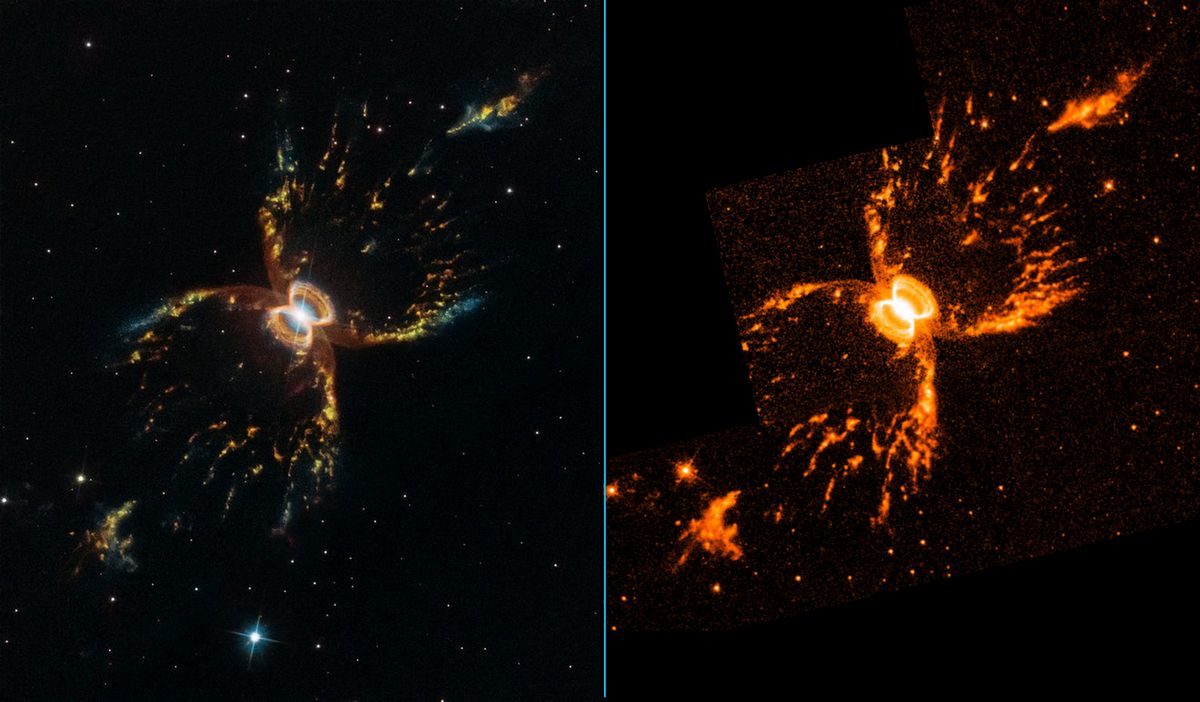A nebulosa Cangrexo do Sur

Créditos: Hubble, NASA, ESA
(Pulsar foto para ampliar)
A nebulosa do Cangrexo do Sur atópase na constelación de Centauro, a uns 7.000 anos luz de distancia da Terra. O que parecen as patas e as pinzas dun cangrexo cósmico son en realidade dúas burbullas de gas e po que saen dun par de estrelas que orbitan no seu centro. Esta estraña parella celestial está composta por unha xigante vermella (unha enorme estrela moribunda en proceso de mudar a súa capa exterior de materia), e unha anana branca (a pequena e morta bola de cristal quente que queda unha vez a xigante vermella desprende a súa última laparada de gas).
De acordo coa ESA, este dúo binario coexiste nunha relación na que a xigante vermella moribunda alimenta continuamente de gas e o po á anana branca por causa da súa atracción gravitatoria.
Despois de acumularse durante miles de anos, toda esa materia pode provocar unha erupción na superficie candente da anana branca, dispersándoa a través do espazo en burbullas xigantes. Os astrónomos pensan que isto sucedeu dúas veces no pasado relativamente recente, dando lugar ás salpicaduras xemelgas de materia brillante visibles nas imaxes de Hubble e terrestre da nebulosa.
(Pulsar texto para cambiar de idioma)





